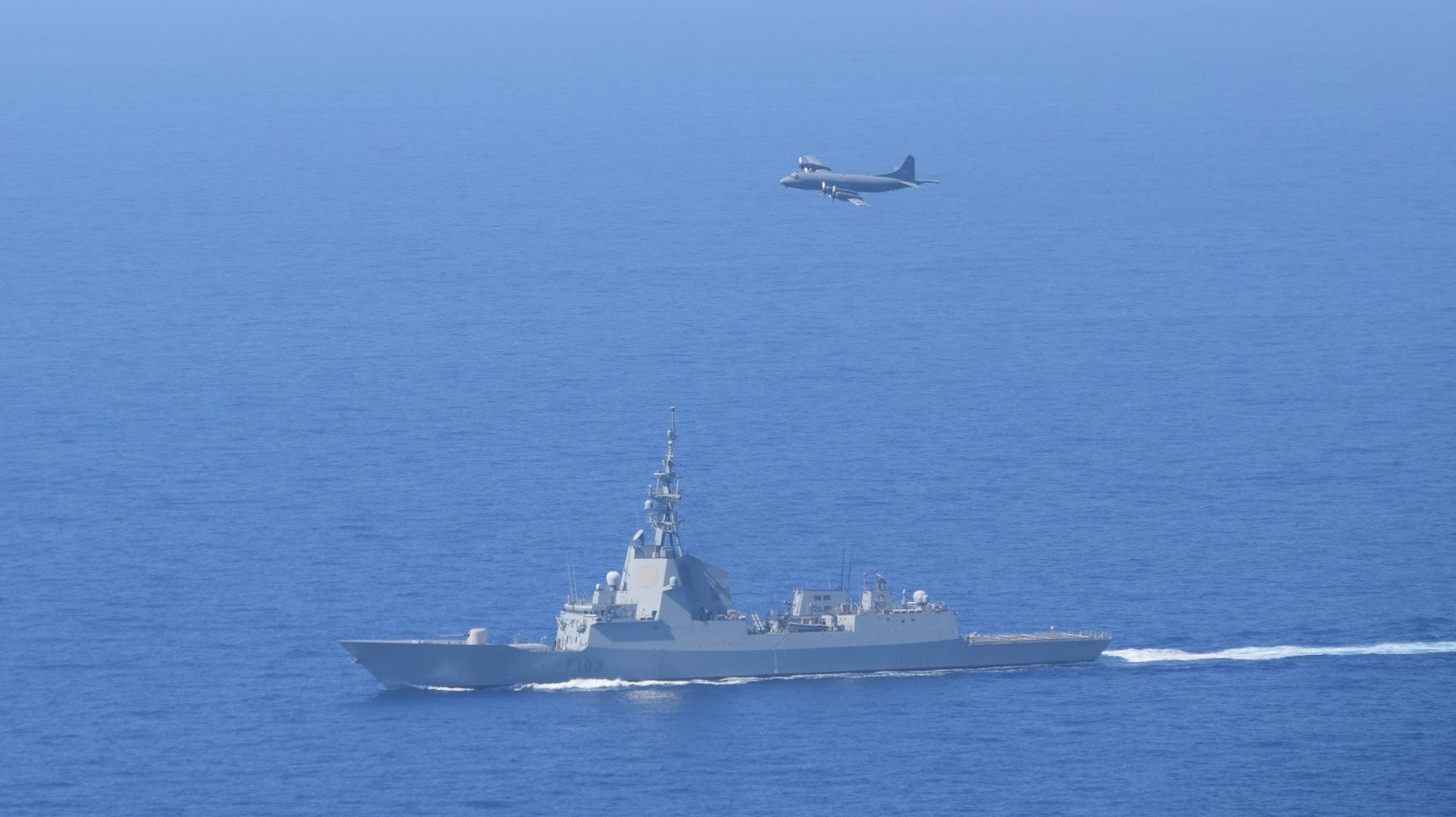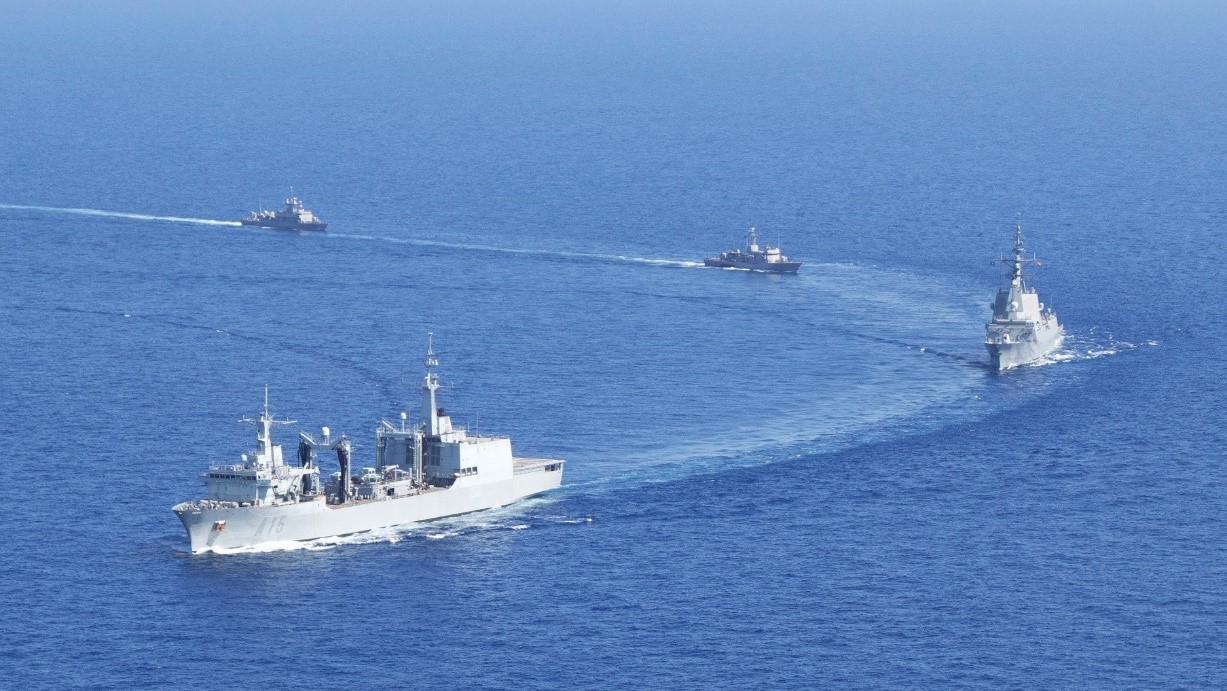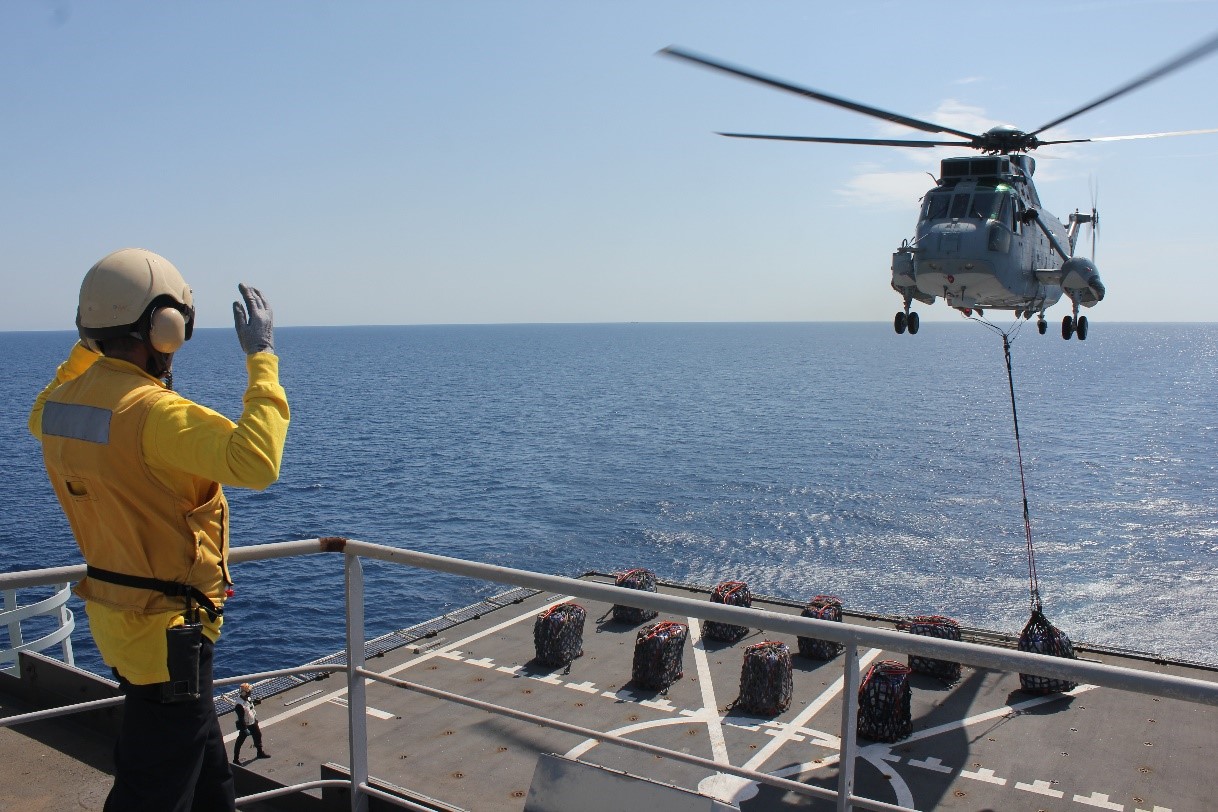
Vessels 'Blas de Lezo' and 'Cantabria' return to Ferrol
- The 'Cantabria' completes its integration into the Standing NATO Maritime Group 2 (SNMG-2), while 'Blas de Lezo' frigate will be still integrated until June 30
Both ships, which belong to the 31st Squadron, are scheduled to return to the Ferrol Arsenal next Sunday, June 26, after their integration into the Standing NATO Maritime Group 2 (SNMG2) in the Mediterranean. Ship ´Cantabria´ was engaged in the NATO operation since May 10, while frigate ´Blas de Lezo´ will complete more than five months of integration between January 25 and June 30.
The deployment of both vessels has coincided with the 40th anniversary of Spain's integration into NATO, showing the commitment and reliability of our country with its allies, giving continuity to the deployment of units that the Navy has been carrying out for the last three decades within the Standing Groups in order to contribute to deterrence and defense at sea.
The 'Blas de Lezo' set sail from the Ferrol on January 22, to head for the Mediterranean. During her deployment, she has carried out reinforced surveillance missions in the eastern Mediterranean, providing support related to Operation 'Sea Guardian'. She has also taken part in multinational exercises 'Dynamic Manta' and 'Flotex', organized by the Italian Navy and the Spanish Navy respectively.
Frigate 'Blas de Lezo' has spent more than 159 days outside its home port, 118 at sea. She has sailed more than 23,000 miles, which is more than one lap around the equator. The ´Blas de Lezo´ has executed most of her deployment in the Eastern Mediterranean calling at the ports of Augusta (Italy), Aksaz (Turkey), Catania (Italy), Souda (Greece), La Goleta (Tunisia), Rota and Malaga (Spain) where logistical and representation tasks wre carried out.
The 'Blas de Lezo' frigate is the third 'Álvaro de Bazán' (F-100) class frigates, which are part of the 31st Surface Squadron. She was delivered to the Navy in December 2004. She has a length of 147 meters, a beam of 18.6 meters, and a displacement of around 6,000 tons.
Frigates F-100 multipurpose are considered some of the best escorts in the world, highlighting their anti-aircraft and command and control capabilities, as a commanding ship. It has the AEGIS Combat System that, along with the associated SPY 1-D multifunction radar, provides her with a outstanding detection capacity, even in coastal waters, as well as the necessary firepower.
The ship’s crew is made up of over 200 people, including an Embarked Air Unit (UNAEMB) from the 10th Squadron, an Operational Security Team, under the command of Commander Luis Carreras-Presas do Campo.
The 'Cantabria' is a Fleet Replenishment Ship (BAC in Spanish) built by Navantia at its factory in Puerto Real, and she is also part of the 31 Surface Squadron based in Ferrol. She was delivered to the Navy in 2010 and it is the second largest vessel in the Navy due to her 174 meters in length and her displacement of almost 20,000 tons .
Its design allows it to perform multi-mission roles, the main one being the supply of fuel, provisions, spare parts and ammunition to the naval units with which it operates and interacts thanks to its advanced combat and communications systems. Another option of using it is the fight against marine pollution, or serving as a deployment platform for special operations units.
The crew consists of over 180 people including an Embarked Air Unit of the 5th Squadron with an SH-3D helicopter, a Marine Corps Security Operational Team and a medical team (ROLE -1) including a dentist, under the command of Commander Alberto Torres Alles. Additionally, after more than 55 years of Navy service, the SH-3D helicopter has made its last deployment before being retired.
The 'Cantabria' has sailed more than 10,000 miles and has made more than 25 replishment to other ships, both fuel and food, spare parts, ammunition and medicines. The ship has operated most of its deployment in the Eastern Mediterranean calling at the ports of Catania (Italy), Souda (Greece), Rota and Malaga (Spain).
Fotos




